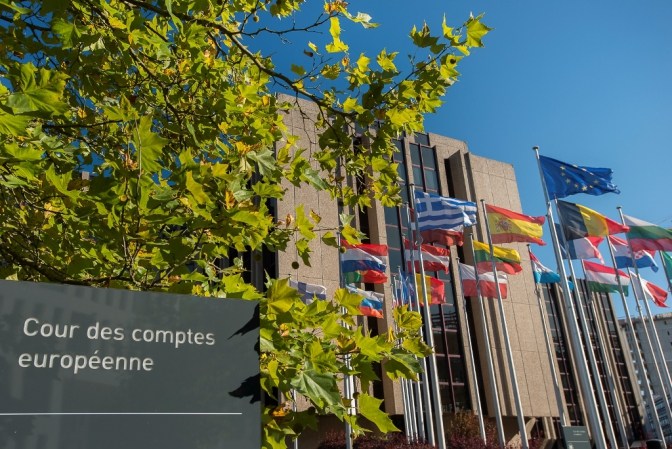The investment hub did not achieve its full potential to boost investment in the EU and provide technical support to project promoters, according to a new audit report from the European Court of Auditors (ECA) published today.
In fact, ECA delivers scathing critique of how the investment hub operated and only used a quarter of its available budget, a rare example in public administration where overspending or misuse of funding is more often subject to audit remarks.
The Hub was launched in 2015 by the Juncker Commission as part of the Investment Plan for Europe and is an important source of EU technical assistance in the form of advisory services. The EU budget covers 75 % of the Hub’s annual budget, up to €20 million, with the European Investment Bank (EIB) covering the remaining 25 % up to €6.6 million.
According to the findings in the report, between 2015 and 2018, the Hub received less than one request per day on average. These came directly from project promoters via the Hub’s website or from other banks. Only 285 (26%) of the requests led to allocations (“assignments”) of Hub resources or advice to public and private sector beneficiaries.
As a result, during its first three and a half years in operation, the Hub only used just over a quarter of its available funding from the EU budget. The auditors therefore concluded that, although beneficiaries expressed satisfaction with the services provided, there had not been enough assignments to have a significant impact in boosting investment in EU projects.
“The European Investment Advisory Hub was one of the main measures taken following the economic crisis to boost investment in the EU, but it faced some strategy and implementation issues”, said Annemie Turtelboom, the Belgian ECA member responsible for the audit (12 May).
The Brussels Times asked Annemie Turtelboom about the strategy and implementation issues related to the shortcomings. Was there really no need of the Hub in the investment process?
“The Hub was set up as a ‘demand driven’ tool with limited prior assessment, for example of the unmet advisory needs the Hub was supposed to address,” she explained. “The result was a regulation, with a budget for the Hub, but without any targets.”
After the Hub was installed, an external consultancy study identified the unmet advisory needs but there were only few requests that led to assignments compared to the resources available. While at the start most of the requests came from the Hub’s website, from 2017 onwards, the major share of these requests came from other expert sources and from internal EIB services.
Lessons learned
The statistics speaks for itself. Of the total 1091 requests received, only 285 led to assignments (i.e. 26%). From the 285 assignments, only 89 resulted in a completed advisory assignment (i.e. 8 % of all requests), of which 27 were managed directly by the EIB.
Furthermore, the Hub lacked a clear strategy and procedures for targeting support as there were no clear criteria for judging the value of an assignment. Only 10 % of the assignments were related to priority sectors (i.e. energy, transport, and environment and resource efficiency) in the member states.
Although the few beneficiaries were highly satisfied, a survey by the auditors found that close to 50 % of respondents said that they could have obtained the same advisory support from other public or private advisory entities.
“There is limited evidence of the Hub having made a significant contribution to increasing the supply of projects suitable for investment,” summarised the ECA member. “Thus, a costly initiative with little impact yet on the economy.”
What does ECA expect to achieve with the audit, especially in a post corona crisis scenario, to boost investments and restart the economy in Europe?
Annemie Turtelboom refers to the recommendations in the report that could lead to a better targeted and more efficient impact on boosting investments, especially if the lessons learned from the Hub can benefit new financing tools such as the new InvestEU programme for the 2021-2027 multiannual financial framework (MFF).
Among others, the Hub and similar advisory bodies should build on direct cooperation with national promoting banks and institutions to improve geographical coverage of advisory services, and develop a more proactive approach by means of local presence.
ECA also plans to hold a conference on the topic in October 2020. The conference will explore the benefits of technical assistance and its priorities, the issue of crowding-out private market finance, as well as the future challenges after a crisis, with a view to improve the InvestEU Fund over the next decade.
In their joint reply to ECA, the Commission and the European Investment Bank do not question the figures but do put up a defence, claiming that the Hub´s “support must be understood in a broader context as the life cycle of an investment project is measured in years”. That said, the two audited bodies accepted all recommendations in the report.
Update:
Since the article was published, the Hub has released its 2019 annual report (14 May). According to the report, by the end of 2019, the Hub had received around 1,600 requests for large-scale or complex advisory support services and around 700 smaller requests, which brings the total figure up to 2,300.
A spokesperson for the European Commission adds that as of the end of 2019, as a result of support from the Hub, 150 projects were sent to the European Investment Bank’s project pipeline to be considered for financial support, with a total project cost of €34 billion. This figure is expected to increase as advisory support translates into investable projects.
M. Apelblat
The Brussels Times

